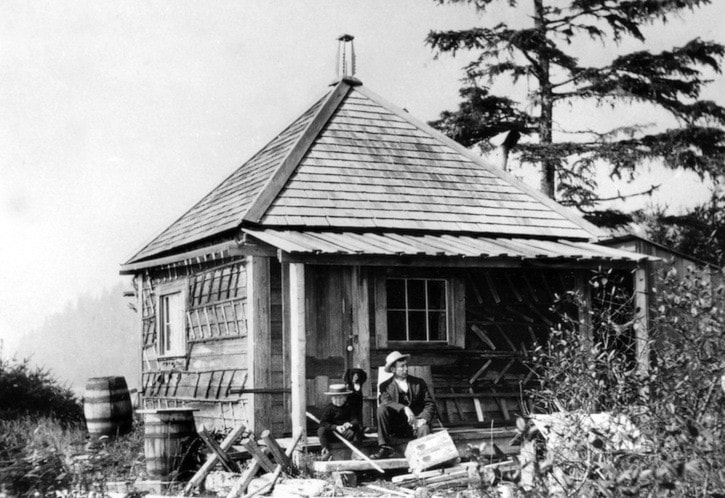Before the hydro development and the forest industry took over the Jordan River valley, this lonely cedar shake linesman’s cabin stood near the mouth of the river, one of the way stations for the Dominion of Canada’s telegraph system that connected Victoria to Cape Beale. Before installation of the line, Victoria’s communications with the few remote lighthouses was by First Nations canoe.
Begun in 1889 a single galvanized wire was strung tree to tree along the rugged coast, completed in 1890. The route was divided into four sections of roughly 25 miles, marked as Sooke, Jordan River, Port San Juan and Clo-ose. Well-known names from those years included lightkeeper W. P. Daykin at Carmanah Point and linesman David Logan at Clo-ose.
Linesmen generally built cabins for shelter every few miles. One of the tasks enabled by the telegraph was the ability of a lightkeeper to report to Victoria headquarters the approach of incoming vessels. Winter storms were a constant challenge for the linesmen and the lightkeepers’ diaries recount their frequent frustrations when the line was down.
The cabin pictured was photographed at Jordan River on June 5, 1904 by a crew of the J. H. Todd Company, as they were scouting the coastline in connection with their series of fishtraps along our coastal waters.
After the horrific loss of 126 lives in the wreck of the steamship Valencia in January 1906, and the public outcry that followed, the government commissioned developing the route into the West Coast Lifesaving Trail in 1907. As better communications developed in the 20th century, the old galvanized line itself was not maintained, but remnants are still found. Across from the Sooke Region Museum, on Belvista, a chunk of tree was found and brought in, with the glass insulator of the telegraph line embedded within. The province’s Juan de Fuca Marine Trail follows much of the old route from Port Renfrew to China Beach.
While we can’t identify the people in the photo, we can report the name of the linesman who served there from 1908 onwards. It was John MacVicar, a Scot who had come out to Canada’s west coast for work. By 1910, Jordan River had become a busy village, and John sent for a bride from Scotland; he and Christina became a large part of Jordan River’s social life. So if you’re out for a drive to Port Renfrew and cross MacVicar Creek, you may recall this telegraph history.
Elida Peers,
Historian
Sooke Region Museum
